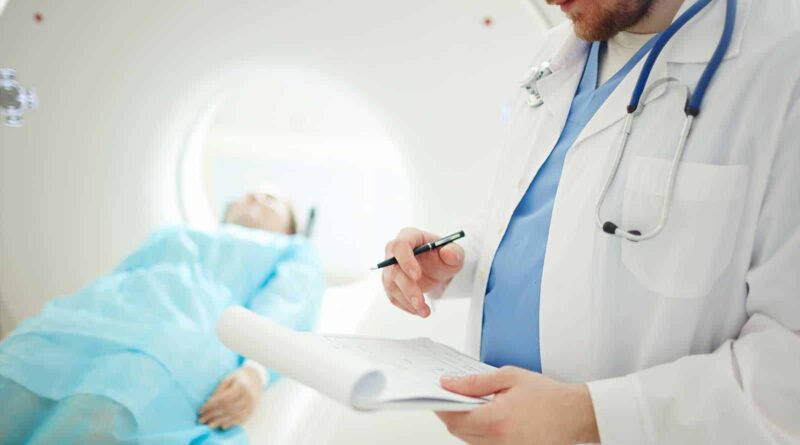Saving Lives, One Image at a Time: The Importance of CT Scans
Introduction:
Imagine a scenario where a seemingly healthy individual suddenly experiences severe chest pain. In such critical moments, medical professionals rely on a powerful tool to quickly diagnose life-threatening conditions: the CT scan. This imaging technique has revolutionized the field of medicine, saving countless lives through its ability to provide detailed images of the human body. In this article, we will explore the crucial role of CT scans in detecting and treating life-threatening conditions.
The Role of CT Scans in Early Detection:
CT scans are instrumental in the early detection of diseases and abnormalities. By producing detailed cross-sectional images of the body, CT scans allow medical professionals to identify conditions at their earliest stages. For example, lung cancer, often difficult to detect in its initial phases, can be identified early through CT scans, leading to higher survival rates. Similarly, CT scans enable the detection of cardiovascular diseases, aneurysms, and other critical conditions, allowing for timely interventions and life-saving treatments.
Diagnostic Accuracy and Precision:
One of the key advantages of CT scans is their exceptional diagnostic accuracy. Traditional imaging techniques often provide limited information, while CT scans offer detailed images that aid in identifying and localizing abnormalities. This precision is especially vital in complex cases where a definitive diagnosis is crucial. From identifying tumors to detecting internal injuries, CT scans play a vital role in accurately diagnosing conditions that could otherwise go undetected.
Emergency Medicine and Trauma Care:
In emergency medicine and trauma care, time is of the essence. CT scans have revolutionized the way healthcare professionals respond to critical situations. By providing rapid and detailed images, CT scans help doctors assess and prioritize injuries accurately. This enables prompt and life-saving interventions. In emergency departments worldwide, CT scans have become an indispensable tool in quickly diagnosing and treating life-threatening conditions.
CT scans can swiftly identify fractures, internal bleeding, and organ damage, providing vital information to guide immediate medical interventions. For example, in cases of head trauma, CT scans can help determine the presence and severity of brain injuries, allowing healthcare providers to deliver timely and appropriate treatments.
Guiding Surgical Interventions:
Surgeons heavily rely on CT scans to plan and execute complex procedures. With the help of CT scan images, surgeons gain valuable insights into the patient’s anatomy and can precisely determine the best approach for surgery. This preoperative planning significantly enhances surgical precision and reduces the risks associated with invasive procedures.
Furthermore, CT-guided biopsies allow for accurate tissue sampling. By using CT scan images as a guide, healthcare professionals can precisely target the affected area and obtain tissue samples for diagnostic purposes. This minimally invasive approach reduces patient discomfort and avoids the need for more invasive surgical procedures.
Monitoring Treatment Progress:
CT scans also play a vital role in monitoring the progress of treatments. By periodically performing CT scans, healthcare professionals can evaluate the effectiveness of treatments and make necessary adjustments if needed. For example, in cancer patients, CT scans help determine the response to chemotherapy or radiation therapy, guiding subsequent treatment decisions.
CT scans provide a quantitative assessment of tumor size and can detect changes in tumor characteristics, such as changes in density or the presence of new lesions. This information allows healthcare providers to tailor treatment plans to individual patients, ensuring the most effective and targeted approach to cancer treatment.
Radiation Exposure and Safety Considerations:
Concerns regarding radiation exposure are understandable when it comes to medical imaging. However, advancements in technology have significantly reduced radiation doses associated with CT scans. Strict protocols and safety measures are in place to ensure patient safety while maximizing the diagnostic benefits of CT scans.
Modern CT scanners are designed to deliver the lowest possible radiation dose while still providing high-quality images. Techniques such as iterative reconstruction algorithms and dose modulation help minimize radiation exposure without compromising the diagnostic accuracy of the scan. Additionally, healthcare professionals follow established guidelines to ensure appropriate utilization of CT scans, weighing the benefits against the potential risks for each patient.
Conclusion:
CT scans have revolutionized the field of medicine, saving lives one image at a time. Through early detection, precise diagnosis, and guiding interventions, CT scans have become an indispensable tool in modern healthcare. Their role in emergency medicine, surgical interventions, and monitoring treatment progress cannot be overstated.
As technology continues to advance, the future of CT scans holds even more promise in improving patient outcomes. Ongoing research and innovation aim to further enhance the diagnostic capabilities of CT scans while minimizing radiation exposure. By prioritizing our health and discussing the potential benefits of CT scans with our healthcare providers, we take a significant step towards ensuring our well-being and potentially saving lives in the process. The remarkable impact of CT scans serves as a testament to the power of medical imaging in transforming healthcare and improving patient care.




